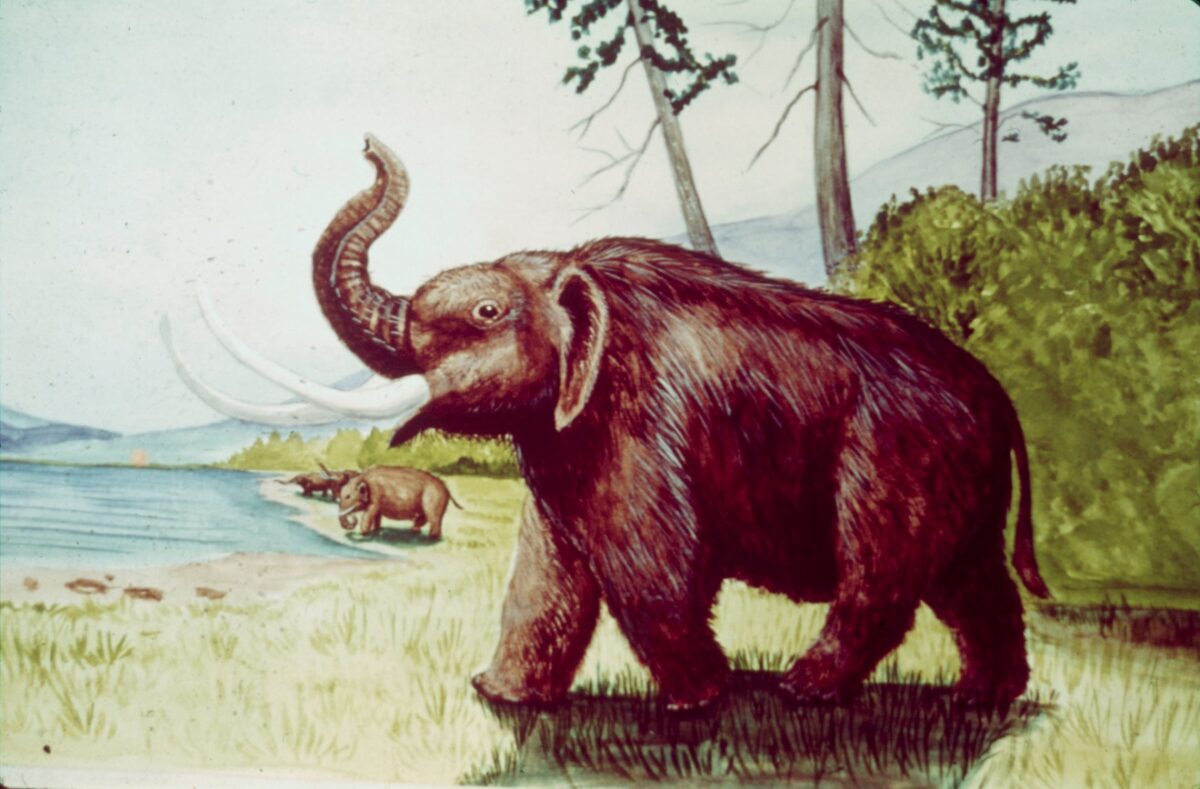By Grant Keddie. 2016.
Introduction
Included here are notes on three mastodon (Mammut americanum) molars in the Royal B.C. Museum Collection and one private collection specimen. Three are from the South-East Corner of Vancouver Island and one from the Yukon Territory. Two of these have been found in the same locations as a larger number of mammoth remains.
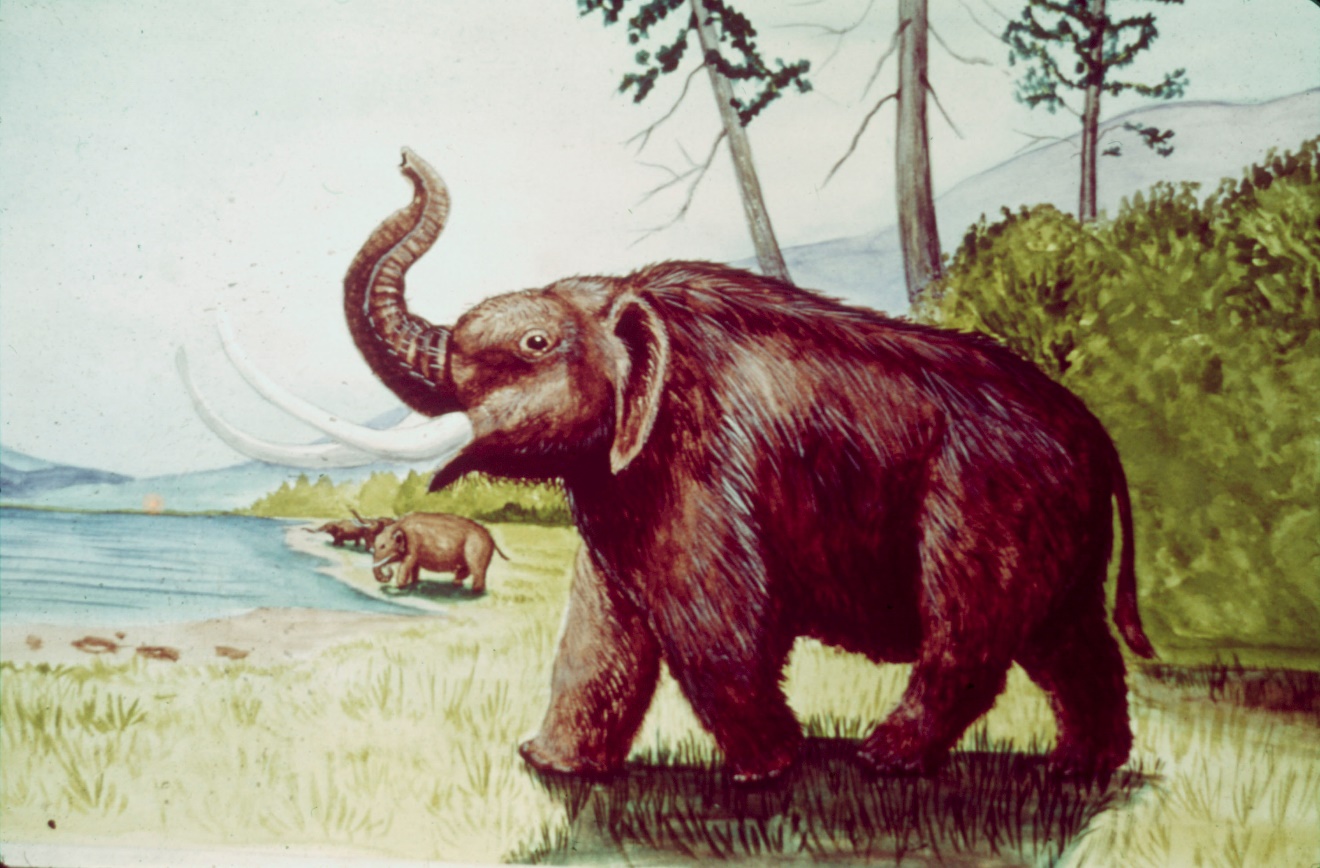
Although there are interglacial deposits in the areas where the mastodon remains of southeastern Vancouver were found, most of the fossil bearing layers have been deposited in front of the advancing glaciers during cold conditions between about 22,000 and 18,000 years ago. Later around 16,000 to 15,000 years ago ice sheets from the Fraser glaciation passed over the area depositing layers of glacial till on top of the older Interglacial surface.
Collection Description
The Mill Bay Mastodon Molar
The specimen was originally incorrectly catalogued as “Shawnigan Lake”, which was the postal address of the donor and not the location find. it is currently catalogued as RBCM.EH1994.003.0023.
It was described in the Annual Report of then Provincial Museum for 1949, on page B20, as: “Les Smith, Shawnigan Lake, one mastodon tooth”. The story of Les Smith’s donation to the Museum was reported in an article in the Daily Colonist on February 25, 1949 – mistakenly saying it was from Shawnigan Lake.
It is noted the molar was once on loan to the McMillian Planetarium in Vancouver, but I acquired more information in the B.C. Archives, Government Record 111. The file contained a Letter of Feb. 22, 1949, to Les Smith of Shawnigan Lake from the Museum director Clifford Carl and a letter of Feb. 29, 1949, from Les J. Smith to Clifford Carl. The latter stated:
“Here, with the information you requested, re the mastodon tooth. This tooth was found in a load of gravel that was delivered to my farm of 17 Sept/48 …The gravel pit is situated at Sheppard and Telegraph roads (see enclosed map). For further information on the pit contact Mr. Barrie, Foreman of the Public Works, Cobble Hill”. The map showed the gravel pit to the north of Mill Bay on the east side of Telegraph Road just to the north of Sheppard Road.
In a letter of March 3, 1949, to L. J. Smith from C. Carl it stated:
“…mastodon tooth …the publicity has brought us in another portion of a tusk (found at James Island) and reports of two other teeth. One of the members of the local Natural History Society will probably be up sometime soon to look over the gravel pit. …”. [Letters. GR111, Box 29, file 05, February, 1949.
I visited and photographed the remaining stratigraphy at this nearly depleted gravel pit in May of 1997 (Figure 3).

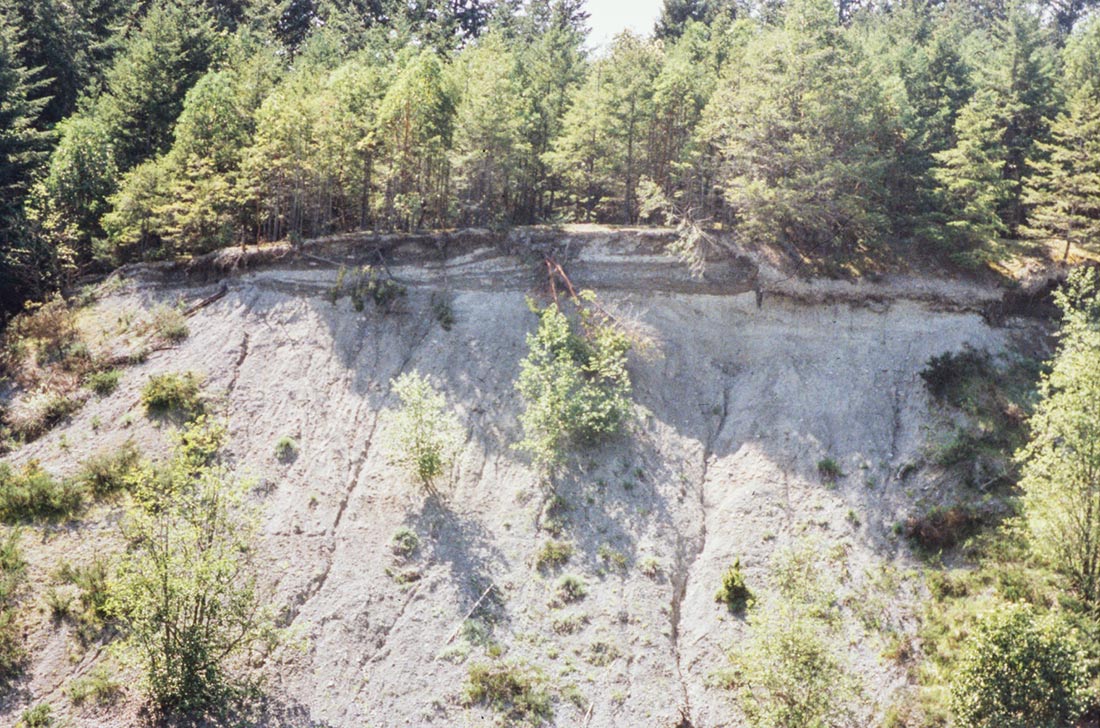
Cordova Bay Molar
I received this specimen on March 1, 2003 and gave it a temporary specimen receipt 073. It is now catalogued as RBCM.EH.2003.002.0001.
This is a molar tooth with the upper portions of the crowns missing. Its general dimensions are 18.7cm long by 7.7cm wide and 10.7cm high. It was found eroding out of the beach sand about 30m from the shore at Cordova Bay. This beach is composed of mostly eroded Quadra sands and gravels.The location is southeast of lot 18 at 5087 Cordova Bay Road. A public access route is on the north side of lot 18.
Jean Mihell found the specimen on Feb.28, 2002 and brought it to the RBCM for identification on March 1. It was later brought back to the RBCM to be donated and given temporary specimen receipt #0615.
Jean Mihell had kept the specimen in wet sand to dry out slowly. The specimen was cracking in a few places and I recommended that it should be sent to conservation for stabilization and a special container made to hold it.
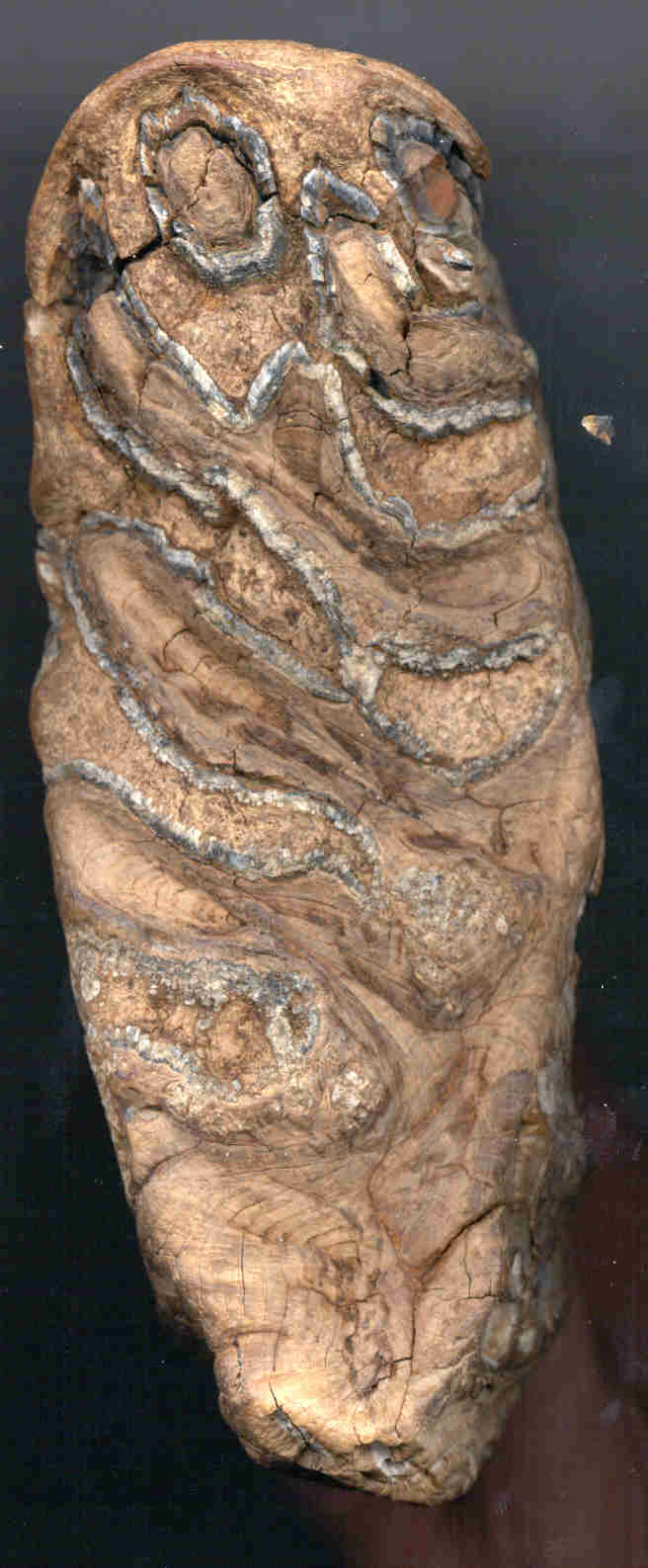

Dago Gulch, Hunter Creek, Yukon Mastodon Molar
This fairly complete mastodon molar tooth (Figure 6) was found at Dago Gulch on Hunker Creek in the Yukon Territories in 1903. It was purchased from C.A. Coulson in 1914, and now has the catalogue number RBCM.EH1994.003.0009 (old catalogue number 489 and labelled as catalogue #938).
In the 1915, Annual Report of the B.C.P.M. this is shown as Plate XI, Figure 2. The report states: “Mastodon tooth. Dago Gulch, Hunker Crk, Yukon Terr. 1903. Bequest Mrs. C.A. Coulson”. It also has “Mastodon Americanus Cuvier” and quotes from Lawrence M. Lamb. A mammoth molar has the same information and is likely the old catalogue number 490. The latter has “Presented by Atkinson” -Who is probably the one who donated it on behalf of “the late Mrs. C.A. Coulson” estate.
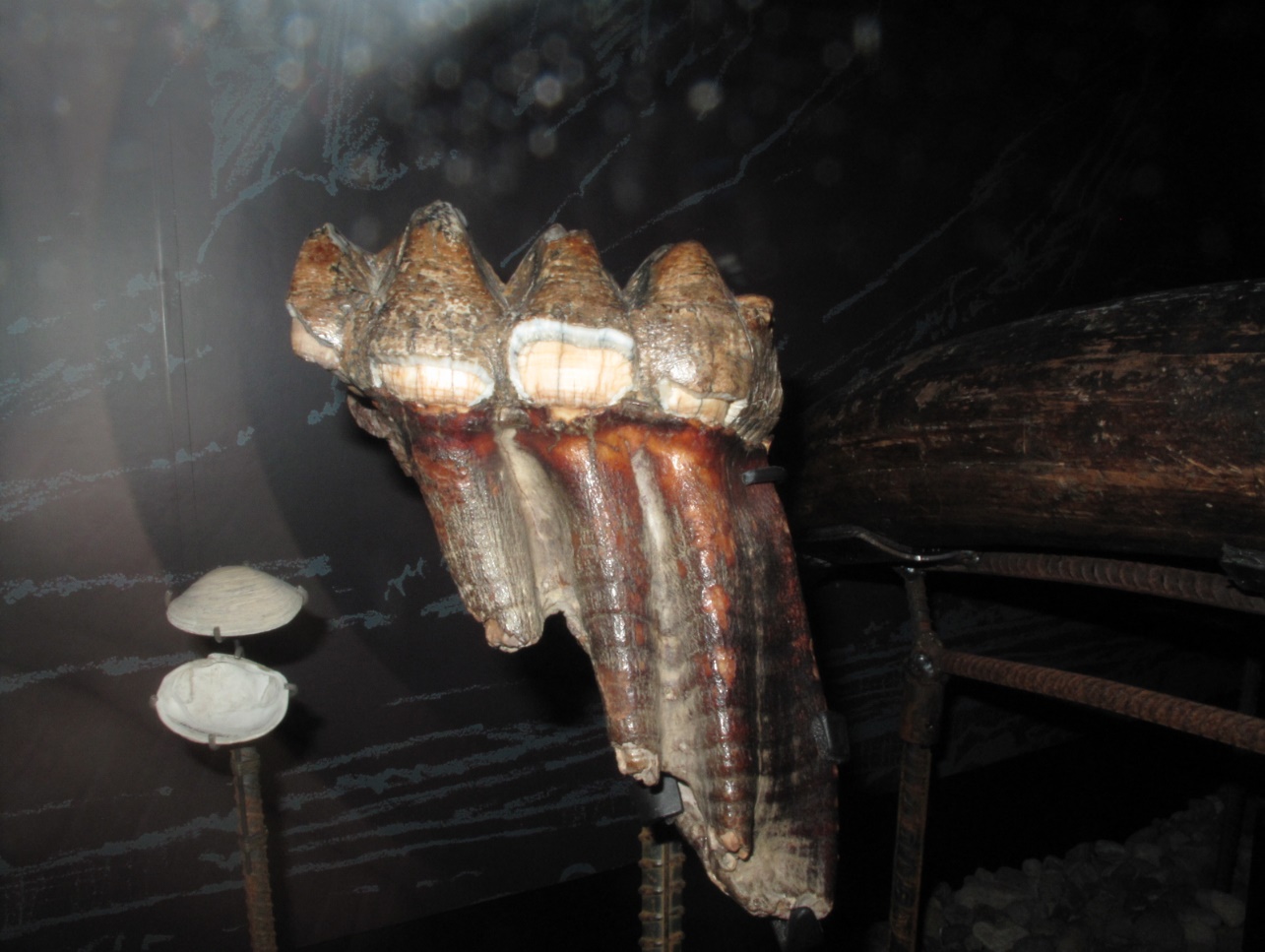
Private Collection Mastodon Molar
Cormorant Point Mastodon Molar. This is a portion of a Mastodon Molar from a private collection. The specimen was brought to the RBCM on January 25, 2006 by the owner and examined by Grant Keddie. It is a mastodon molar missing the upper portions. It was found on the beach West of Cormorant Point at a location between Bissenden Place and Barrie Road. Access via Mt. Douglas Park at low tide.
Discussion
In the Yukon and Alaska, mastodons had died out by 50,000 years ago (Zazula 2014). These specimens from southern Vancouver have not been dated and were not found in-situ in known dated deposits. However, the most common deposits on the washed-out beaches where the two Cordova Bay specimens were found is Olympia interglacial sand and gravel deposits dating around the period of 23-18,000 years ago (Hebda et. Al. 2016). The latter deposits form a long ridge between Cordova Bay and the Elk Lake and Beaver Lake areas.
Although these mastodon molars could be older, it is likely that the two molars from Cordova date to around the same time period as the Manis mastodon from Sequim Washington which is dated to around 13,800 years ago.
The Manis Mastodon
The Manis mastodon from Sequim was found on the Manis farm when digging a duck pond in August 1977. It had the point of a bone spear imbedded in one of its ribs. This demonstrated that humans were hunting mastodon near this location. The remains were dated to around 13,800 years ago.
Dr. Carl Gustafson of Washington State University identified the bone point and stated that it was the best evidence of interaction between humans and mastodons (Gustafson et. al.1979). We examined the original bone under a high-powered light microscope at the Provincial Museum in 1978 (Figure 7), and agreed with Gustafson that this was a bone point. Later studies confirmed the date and existence of a bone point tip (Waters, et, al. 2011). Some of the Manis mastodon bones displayed in the Sequim Museum in Washinton State can be seen in Figure 8.
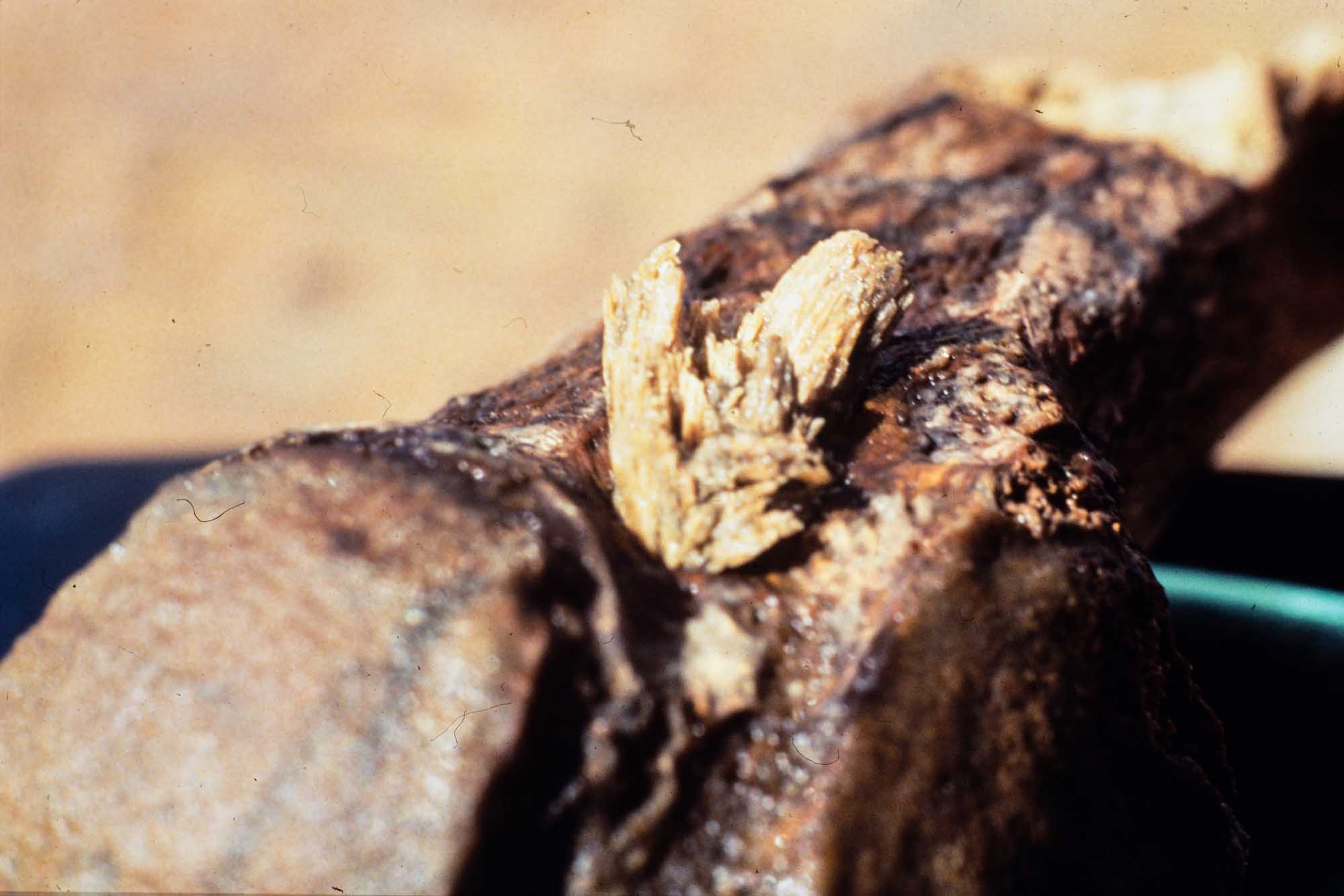
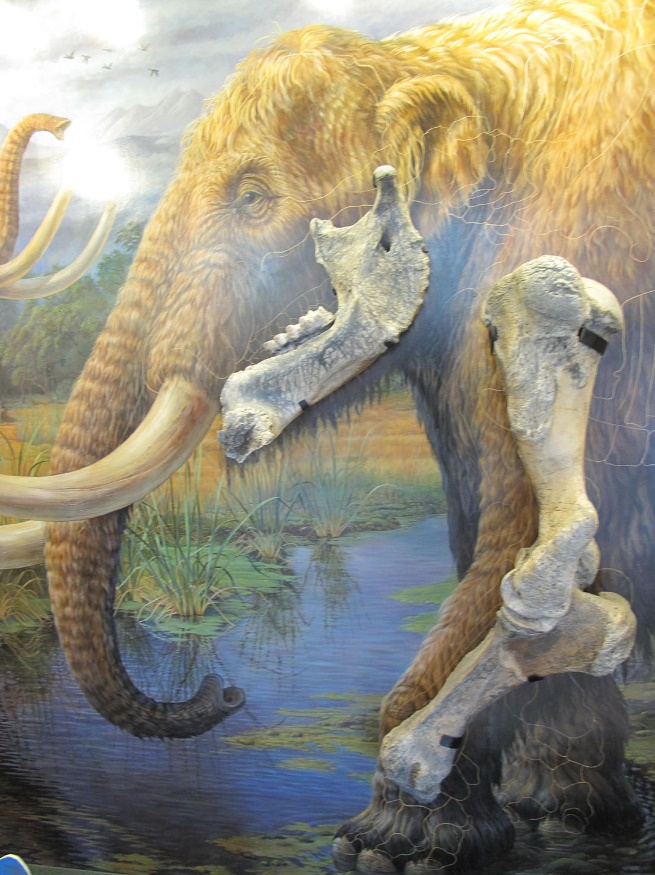
Mastodons of the northern U.S.
Mastodons were abundant in the northeastern U.S., surviving in suitable habitats of expanding boreal forests, in the period between 14,600 and 10,500 years ago (Feranec, et. al. 2021). This general scenario fits with the dating of the Manis mastodon of Sequim and may also pertain to at least some of the specimens from southeastern Vancouver Island.
References
Daily Colonist. Ancient Mammal’s Tooth Discovery of Island Man. World’s Biggest Tooth Displayed. February 25, 1949, page 10.
Feranec, Robert & Christiansen, David Driver, & Stuart Fiedel, Stuart. 2021. “Man and the Mastodon”: Revisiting the Northborough Mastodon. Journal of Eastern Paleontologist 9:1-22.
Gustafson, Carl E.; Gilbow, Delbert; Daugherty, Richard D. (1979). The Manis Mastodon Site: Early Man on the Olympic Peninsula, Canadian Journal of Archaeology, 3:157-164
Hebda, R.J., Lian, O.B. and Hicock, S.R. 2016. ‘Olympia interstadial: Vegetation, landscape history, and paleoclimatic implications of a mid-wisconsinan (MIS3) nonglacial sequence from southwest british columbia, canada’, Canadian Journal of Earth Sciences, 53(3):304–320.
Petersen, Kenneth L. ; Peter J. Mehringer, Jr.; Carl E. Gustafson. 1983. “Late-glacial vegetation and climate at the Manis Mastodon site, Olympic Peninsula, Washington”. Quaternary Research 20 (2): 215–231.
Waters, Michael R., Thomas W. Stafford Jr., H. Gregory McDonald, Carl Gustafson, Morten Rasmussen, Enrico Cappellini, Jesper V. Olsen, Damian Szklarczyk, Lars Juhl Jensen, M. Thomas P. Gilbert, Eske Willerslev. 2011. Pre-Clovis Mastodon Hunting 13,800 Years Ago at the Manis Site, Washington. Science 334(6054):351-3.
Zazula, G.D. et al. (2014) ‘American mastodon extirpation in the Arctic and Subarctic predates human colonization and terminal Pleistocene climate change’, Proceedings of the National Academy of Sciences, 111(52), pp. 18460–18465.
